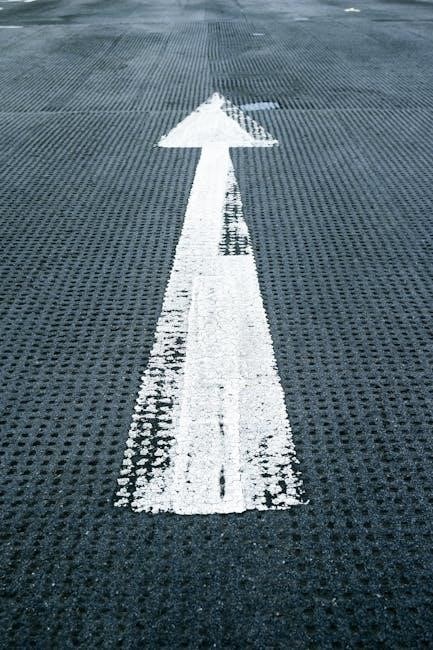Iowa Boot Size Guide
Finding the right size for your LOWA boots is crucial for comfort and performance on the trails․ This comprehensive guide will walk you through the steps to accurately measure your feet, understand LOWA’s sizing system, and ensure a perfect fit․ With proper sizing, you’ll avoid blisters and discomfort, ensuring enjoyable outdoor adventures․
LOWA is a renowned European brand known for its high-quality outdoor footwear, particularly its hiking and mountaineering boots․ Designed and manufactured in Europe, LOWA boots emphasize durability, comfort, and performance․ They cater to a wide range of activities, from light hiking to demanding alpine expeditions․
LOWA utilizes EU sizing, which can sometimes be confusing for customers accustomed to US or UK sizes; Their conversion charts may contain inaccuracies, making it essential to understand how to properly determine your LOWA boot size․ Many users find that LOWA boots fit true to their standard shoe size, but individual foot shapes and preferences can vary․
LOWA boots are crafted with precision and often feature innovative technologies like GORE-TEX linings for waterproofness and Vibram outsoles for superior traction․ They also offer various widths to accommodate different foot types․ Because of these factors, understanding how LOWA boots fit is key to selecting the right pair for your needs․ Whether you’re a seasoned hiker or just starting out, a well-fitted LOWA boot can make all the difference in your outdoor experience․
Why a Size Guide is Important for LOWA Boots
A size guide is particularly important for LOWA boots due to a few key reasons․ Firstly, LOWA uses European (EU) sizing, which differs from US and UK sizing systems․ Direct conversions between these systems aren’t always accurate, and LOWA’s own conversion charts may have discrepancies․ Relying solely on a standard conversion could lead to selecting the wrong size, resulting in discomfort or even injury on the trail․
Secondly, LOWA boots are designed with specific activities in mind, and a proper fit is crucial for optimal performance․ A boot that’s too small can cause blisters and toe pain, especially during descents․ Conversely, a boot that’s too large can lead to slippage, instability, and potential ankle injuries․ The right size ensures proper support, stability, and comfort, allowing you to focus on your hike rather than your feet․
Finally, investing in a quality pair of LOWA boots is a significant expense, and ensuring the correct fit from the start can save you time, money, and frustration․ Returns and exchanges can be a hassle, so taking the time to accurately measure your feet and consult a reliable size guide is essential; A well-fitted LOWA boot will provide years of comfortable and reliable performance, making it a worthwhile investment for any outdoor enthusiast․
Measuring Your Feet Accurately
Accurately measuring your feet is the first and most important step in finding the right size LOWA boots․ It’s best to measure your feet at the end of the day, as they tend to swell slightly after activity․ Wear the type of socks you’ll typically wear with your hiking boots to ensure an accurate measurement․
To begin, place a piece of paper against a wall on a hard, flat surface․ Stand with your heel against the wall and your foot flat on the paper․ Have someone trace the outline of your foot, or carefully trace it yourself․ Be sure to keep the pen or pencil vertical and maintain consistent pressure․
Once you have a tracing of both feet, measure the length of each foot from the heel to the longest toe․ Use a ruler or measuring tape to measure the distance in millimeters or inches․ It’s essential to measure both feet, as they may differ slightly in size․ Use the measurement of the larger foot when consulting the LOWA size chart․ Additionally, you can measure the width of your foot at the widest point to determine if you need a narrow, standard, or wide width boot․ Accurate measurements are the foundation for a comfortable and well-fitting pair of LOWA boots․
Understanding EU Sizing for LOWA Boots
LOWA boots are designed and manufactured in Europe, so they primarily use the European (EU) sizing system․ Understanding how EU sizing translates to other sizing systems, such as US and UK sizes, is crucial for selecting the correct size․ However, it’s important to note that conversions between EU, US, and UK sizes are not always precise, and variations can occur between different brands․
Typically, LOWA provides size conversion charts that map EU sizes to US and UK sizes․ These charts can be a helpful starting point, but it’s always recommended to double-check your foot measurements against the chart to ensure accuracy․ Keep in mind that LOWA’s own conversion charts may contain errors, so it’s wise to consult multiple sources or use a reliable online conversion tool․
When using a size chart, pay close attention to whether the chart is for men’s or women’s sizes, as there are significant differences between the two․ Additionally, be aware that some LOWA models may have specific sizing considerations, such as injected soles, which can affect the fit․ If you’re unsure about your EU size, it’s always best to err on the side of caution and order a half size up, especially if you plan to wear thick socks․
LOWA’s Conversion Errors and Absolute Columns

LOWA footwear, being designed in Europe, uses EU sizing as its primary system․ However, when converting these EU sizes to other international standards like US and UK sizes, inaccuracies can arise․ LOWA’s own conversion charts sometimes contain errors, leading to potential confusion when customers try to determine their correct size․
To address these inconsistencies, some size guides include “Absolute” columns․ These columns represent the most accurate conversions possible, correcting the errors found in LOWA’s official charts․ If you’ve owned LOWA boots before, ordering the same EU size is generally recommended․ However, if you’re new to LOWA or unsure about your size, relying on the “Absolute” columns can provide a more reliable starting point;
It’s crucial to compare your foot measurements against both LOWA’s original conversion chart and the “Absolute” columns to identify any discrepancies․ Remember, the goal is to find the EU size that corresponds most closely to your actual foot length․ Keep in mind that individual foot shapes can vary, so trying on the boots with appropriate socks is always the best way to ensure a proper fit․ When in doubt, seeking professional boot fitting advice can help you navigate these sizing complexities and select the most comfortable and functional option․
Width Options: Narrow, Standard, and Wide
Beyond length, the width of a boot is crucial for a comfortable and secure fit․ LOWA offers various width options to accommodate different foot shapes, ensuring optimal performance and preventing discomfort․ These options typically include narrow, standard (or medium), and wide․
The “standard” width is designed for individuals with average foot width․ It’s the most common option and generally suits a broad range of people․ If you’ve never had issues with boot width before, the standard width is likely a good starting point․ However, if you find that your feet feel constricted in standard-width boots, or if you experience pressure points on the sides of your feet, a wider option may be necessary․
Conversely, if you have slender feet that tend to swim in standard-width boots, a “narrow” option can provide a more secure and snug fit․ Narrow widths are designed to reduce excess space inside the boot, preventing slippage and improving overall stability․ Keep in mind that the availability of width options can vary depending on the specific LOWA boot model․ Not all models are offered in narrow or wide widths․
To determine the best width for your feet, it’s recommended to have your feet professionally measured, including both length and width․ This will provide you with the most accurate information to guide your selection․
How LOWA Boots Should Fit: Key Considerations
A proper fit for LOWA boots is paramount for comfort, performance, and preventing injuries on the trail․ Several key considerations come into play when assessing the fit of your new boots․ Firstly, the length of the boot should allow for adequate toe room․ You should have at least a thumb’s width of space between your longest toe and the end of the boot when standing․ This prevents your toes from hitting the front during descents, which can cause pain and blisters․
Secondly, the heel should fit snugly without excessive slipping․ A slight amount of heel lift is acceptable, but your heel should not be sliding up and down significantly as you walk․ Excessive heel slippage can lead to blisters and discomfort․ The midfoot should feel secure and supported, without feeling overly tight or constricting․ You should be able to wiggle your toes comfortably inside the boot․
Consider the intended use of the boots․ If you plan on wearing thick socks for cold-weather hiking, factor that into the fit․ Try on boots with the socks you intend to wear during your activities․ Finally, pay attention to any pressure points or areas of discomfort․ A well-fitting boot should feel comfortable from the start, with no immediate areas of rubbing or pinching․ Remember, a proper fit is crucial, and taking the time to assess these key considerations will ensure happy feet on your adventures․

Trying Boots On: Socks and Timing
When trying on LOWA boots, the socks you wear and the time of day significantly impact the accuracy of the fit assessment․ Always wear the same type of socks you intend to use while hiking or working in your boots․ Different socks have varying thicknesses, and using the wrong socks during the fitting process can lead to selecting the wrong boot size․ If you plan to wear thick wool socks for cold weather, be sure to wear them when trying on boots․
The time of day also matters․ Your feet tend to swell throughout the day, especially after prolonged activity․ It’s best to try on boots in the afternoon or evening when your feet are at their largest․ This ensures that the boots will still fit comfortably even after hours of wear․ If you try on boots in the morning when your feet are smaller, you might end up with boots that feel too tight later in the day․

Take your time when trying on boots․ Walk around the store or your home, paying attention to how the boots feel on your feet․ Don’t rush the process, as it’s essential to get a good feel for the fit before making a purchase․ Socks and timing are crucial elements in finding the perfect fit for your LOWA boots․
The Importance of Break-In Period
Even with the perfect fit, LOWA boots often require a break-in period to achieve optimal comfort․ New boots can feel stiff and uncomfortable initially, but with regular wear, the materials will soften and mold to the shape of your feet․ The break-in period is essential for preventing blisters and hot spots during extended use․
Start by wearing your new LOWA boots for short periods around the house․ Gradually increase the wearing time as the boots become more comfortable․ You can also use a boot stretcher or leather conditioner to help soften the leather and speed up the break-in process․ Avoid wearing your new boots on long hikes or demanding activities until they are fully broken in․
During the break-in period, pay close attention to any areas where the boots are rubbing or causing discomfort․ Use moleskin or blister pads to protect those areas until the boots soften․ Remember that all boots, however comfy they feel from new, need a little time to soften up․
Patience is key during the break-in period․ Don’t expect your LOWA boots to feel perfect after just a few wears․ With consistent use and proper care, they will eventually conform to your feet, providing a comfortable and supportive fit for years to come․
Tips for Gauging Overall Fit at Home
After receiving your LOWA boots, but before committing to a trek, assess the fit at home․ Begin by wearing the socks you intend to use with the boots․ Lace them up snugly, mimicking how you would on the trail․ Walk around indoors, paying attention to any pressure points or areas of discomfort․
A simple test involves kicking your heel back in the boot․ You should have about a thumb’s width of space between your longest toe and the end of the boot․ This prevents toe-banging on descents․ Ensure your heel doesn’t lift excessively as you walk; minimal heel movement is acceptable․
Flex your foot to simulate uphill hiking․ The boots should bend comfortably at the ball of your foot without excessive pinching or binding․ Check the ankle support; it should be secure without restricting movement․ If you notice any significant issues, consider trying a different size or width․
Remember, the overall goal is a snug, secure fit that allows for natural foot movement without causing discomfort․ If you have any doubts, our retail accounts usually offer free boot fitting advice․ Don’t hesitate to seek professional guidance to ensure the best possible fit for your LOWA boots․
Using a Foot Size Chart: A Step-by-Step Guide
A foot size chart is a valuable tool for determining your LOWA boot size․ Begin by downloading and printing the official LOWA foot size chart, ensuring it’s printed at 100% scale to maintain accuracy․ Place the chart on a hard, flat surface․
Stand on the chart with your heel aligned to the designated heel line․ It’s best to wear the socks you intend to use with your boots․ Have someone trace your foot, or carefully mark the longest point of your toes․ Repeat this process for both feet, as foot sizes can vary slightly․
Measure the distance from the heel line to the longest toe marking in millimeters or inches․ Compare this measurement to the size chart to find your corresponding LOWA size․ Remember that LOWA uses UK sizing, so be sure to reference the correct column․
If your measurement falls between sizes, it’s generally recommended to choose the larger size, especially for hiking boots, to accommodate thicker socks and foot swelling during activity․ Also, consider the width of your foot and if you have a narrow or wide foot․ Use this information to select the right width․
Where to Get Professional Boot Fitting Advice
When to Size Up or Down
Knowing when to deviate from your measured foot size is essential for achieving the perfect LOWA boot fit․ Sizing up is often recommended for hiking and backpacking boots, particularly if you anticipate wearing thick socks or engaging in activities where your feet may swell, such as long hikes or ascents․ A little extra room can prevent toe compression and blisters․

Consider sizing down if you’re between sizes and prefer a snug fit, or if you’re purchasing LOWA boots for less demanding activities․ This might be applicable for everyday wear or shorter walks; However, ensure your toes aren’t cramped, as this can lead to discomfort and potential foot problems․
Individual foot shape also plays a role․ If you have narrow feet, sizing down might provide a more secure fit, especially in boots without narrow width options․ Conversely, those with wide feet may need to size up or opt for LOWA boots specifically designed in a wide width․
Ultimately, the decision to size up or down depends on your personal preferences and the intended use of the boots․ Always prioritize comfort and ensure ample room for your toes to move freely․ Trying on boots with appropriate socks and simulating hiking conditions can help you make the right choice․